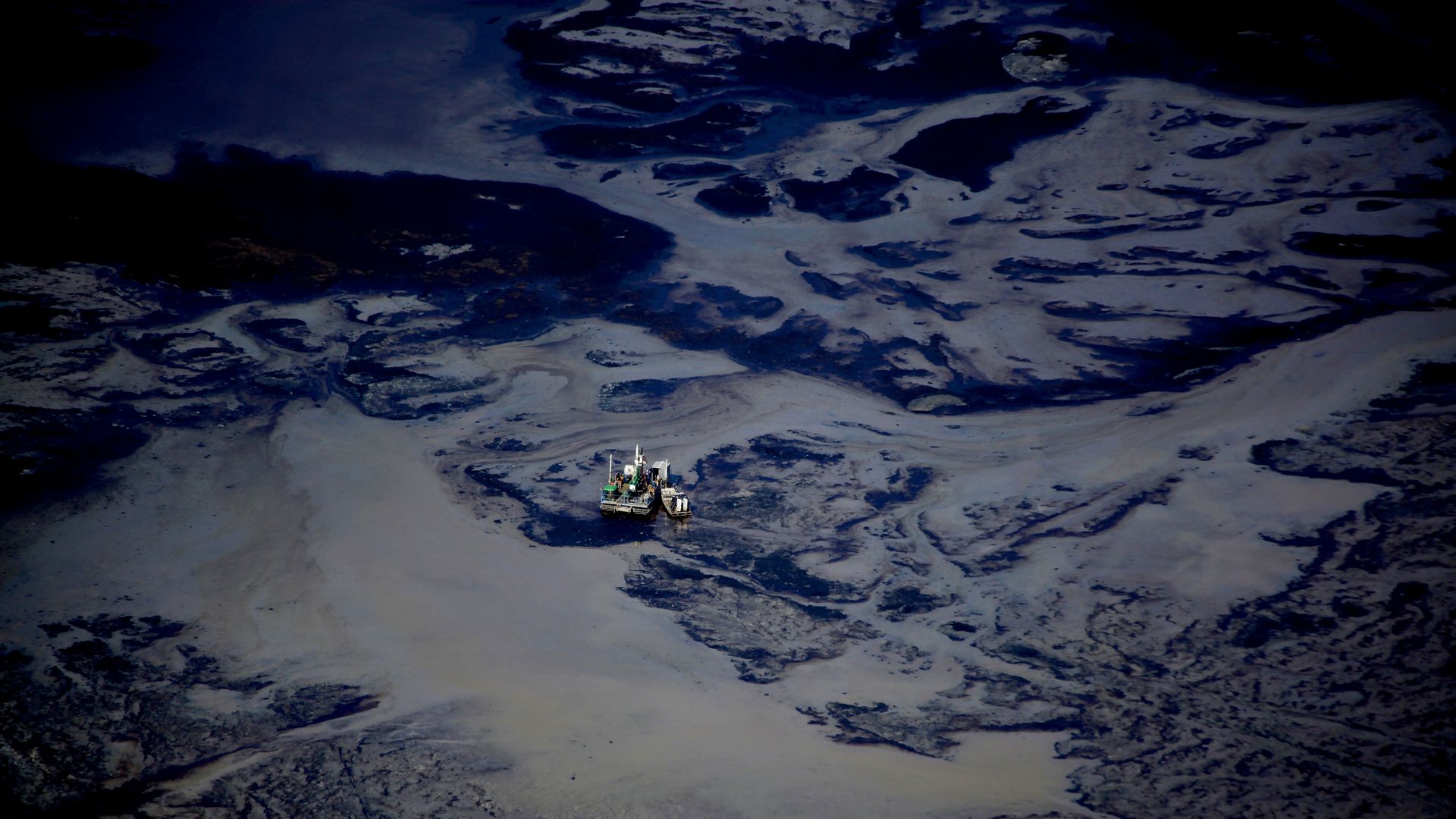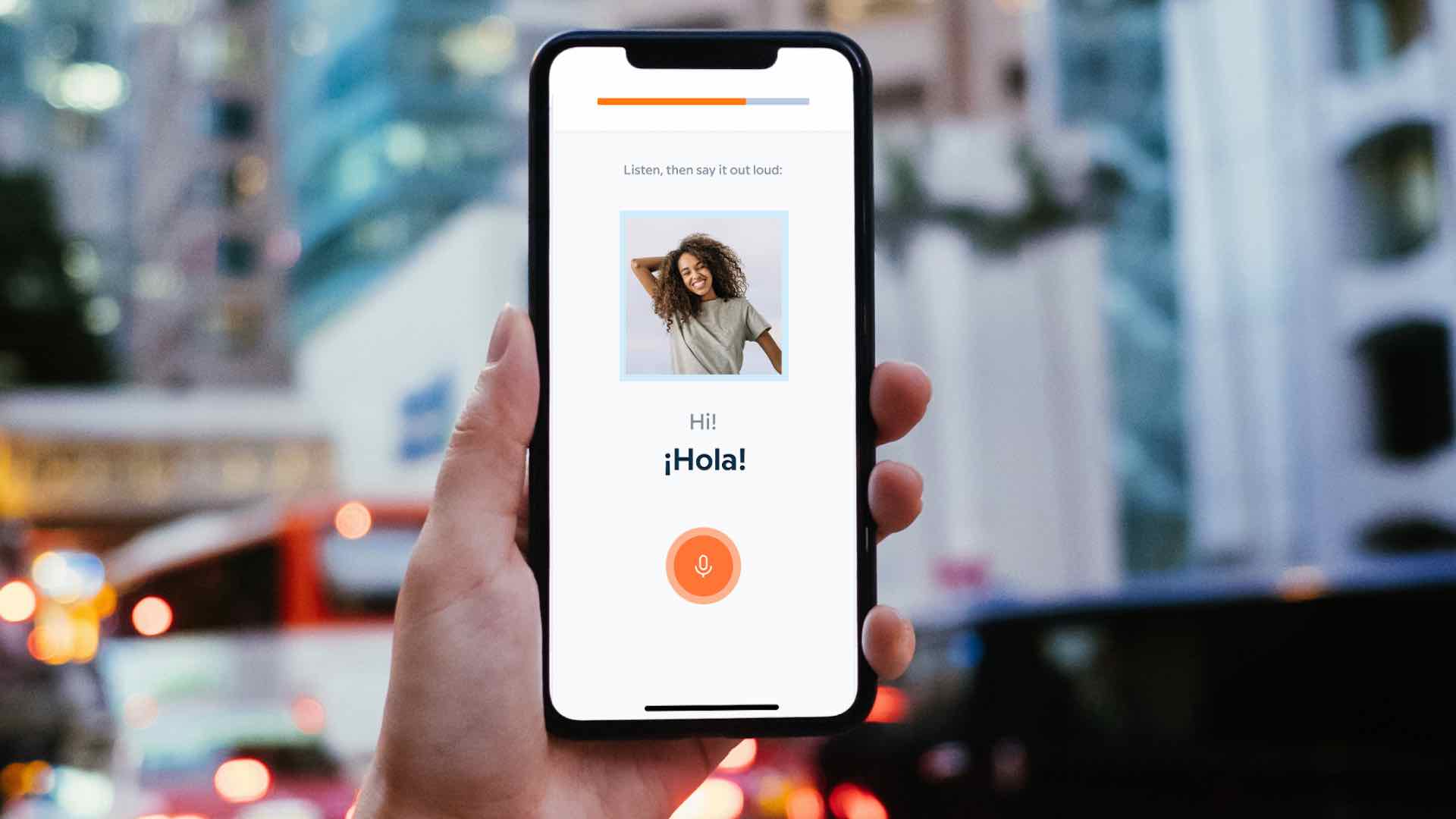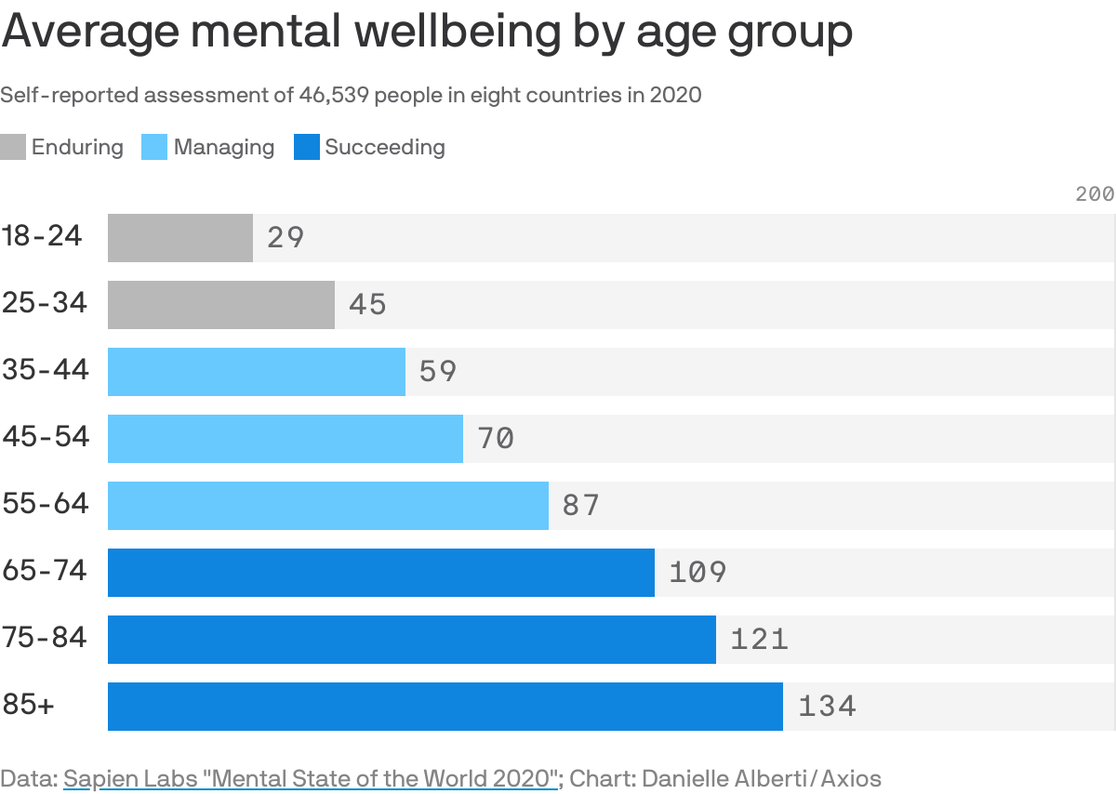| | | | | | | Presented By Babbel | | | | Axios Future | | By Bryan Walsh ·Mar 17, 2021 | | Welcome to Axios Future, where after a pandemic year, I'm celebrating St. Patrick's Day like my Irish ancestors did: desperately hoping for life to get better. Today's Smart Brevity count: 1,847 words or about 7 minutes | | | | | | 1 big thing: How online education and tutoring can fight COVID learning loss |  | | | Illustration: Sarah Grillo/Axios | | | | The learning loss suffered by many students during the pandemic is real and debilitating, but targeted online EdTech and tutoring could help close the gap. Why it matters: Losing a year or more of in-person education could have lifelong effects — especially for the most disadvantaged children — which puts a premium on efforts to get students back up to speed. What's happening: Months of often inferior remote schooling — plus the additional pressures of the pandemic — has led to measurable learning loss for students, according to education experts. - In fall testing, students scored 5–10 points lower on math achievement than the year before, per data from NWEA.
- While reading scores were mostly comparable to 2019, both reading and math results may have been artificially inflated by the fact that millions of students have seemingly disappeared from remote schooling altogether.
The big picture: The "COVID-19 slide" could lead to lifelong economic losses, especially for students of color, whom consultants at McKinsey estimate have fallen behind by as much as 12 months, compared to four to eight months for white students. - That's why schools and governments need to support targeted interventions "that are able to move kids forward very rapidly and a lot, because the amount the kids have lost is a lot," says Robert Slavin, director of the Center for Research and Reform in Education at Johns Hopkins University.
Details: Those interventions could include leveraging the online learning platforms that have experienced a tremendous increase in demand and funding during the pandemic. - Codeacademy — which offers virtual education in computer coding — provided scholarships to over 100,000 students whose studies were interrupted by COVID-19, part of what the company's CEO Zach Sims says can be a "valuable replacement for the loss of offline learning."
- Stride — a longtime online education provider that saw a more than 40% increase in students served during the pandemic — found that students who participated in the company's online education offerings experienced less learning loss, based on data from the NWEA test results.
- "Our curriculum has been developed specifically to be delivered virtually," which makes it more effective than simply switching in-person education to Zoom, according to Stride's senior VP Mike Kraft.
Context: The most effective — and ambitious — strategy to combat learning loss involves mostly online tutors who can reach struggling students one by one. - Johns Hopkins' Slavin has called for a "Tutoring Marshall Plan" — supported by several past secretaries of education — that would involve recruiting and training up to 300,000 tutors.
- Recent research from Brown University found that intensive tutoring — meaning three or more sessions per week — in groups no larger than three to four students and carried out by trained volunteers can increase achievement by an additional three to 15 months of learning.
- "There's nothing that approaches the impact of proven tutoring using structured materials and well-trained tutors," says Slavin.
Zoom in: Zahid Mustafa, a recent graduate from the University of California-Riverside, launched the We Succeed nonprofit online tutoring service to match younger learners to high-achieving college students needing financial support. - "Parents tell us that in one hour of tutoring, their kids learn far more than they would in one hour of remote school," says Mustafa.
The catch: Massively scaling up tutoring would require billions in funding that has yet to fully materialize. The bottom line: Education is a continual process, one that's built year by year. - "If you start to fall behind," says Mustafa, "it's just a slippery slope."
|     | | | | | | 2. The kids are definitely not all right | | A new survey of people in eight countries finds that mental wellness took a dive in 2020, with the worst effects found among the young. Why it matters: Few people's mental health escaped unscathed from the effects of the pandemic, but the gap between the state of the young versus older adults could mean serious problems down the road. What's happening: Earlier this week, Sapien Labs — a nonprofit that works to understand the human mind — released its 2020 Mental State of the World report. - The report compiles tens of thousands of responses from eight English-speaking countries, including the U.S., to provide a snapshot of what Sapien founder Tara Thiagarajan calls "mental wellbeing — the full breadth of your emotional and social and cognitive function and capability."
By the numbers: Not surprisingly, given... everything, the overall mental wellbeing score dropped significantly in 2020 from the year before, with the percentage of respondents falling into the clinical risk level rising from 14% in 2019 to 26% in 2020. - Notably, though, the crisis was particularly pronounced among young adults aged 18–24, nearly half of whom reported clinical levels of risk, compared to 6% for those 65 and over.
What they're saying: "What we're seeing is kind of terrifying," says Thiagarajan. "44% of young people are experiencing symptoms of such severity that they find in a big challenge to function effectively in life." Yes, but: School closures and early job losses took a particularly profound toll on the young during the pandemic — which hopefully won't be repeated — and it's possible the high levels of mental wellbeing in older people shows that we can gain emotional resiliency as we age. - Because the survey was only in English and accessed over the internet, it may not be fully representative of the countries' populations.
The bottom line: Still, notes Thiagarajan, the results are a warning sign for the future. - "If this group comes into middle age and instead of having an average of 15% with mental health issues you instead have 40%, that's a fundamentally different society," she says.
|     | | | | | | 3. Scientists coax cells to mimic earliest human embryo stage |  | | | A human blastoid with all three cell types typically found in a human blastocyst: trophoblast (white), epiblast (green) and hypoblast (red). Blue indicates the nucleus from all cells. Image: Leqian Yu and Jun Wu/University of Texas Southwestern Medical Center | | | | Human stem cells can be grown in the lab into balls of cells that resemble embryos in the earliest stages, my Axios colleague Alison Snyder reports. Why it matters: The models of the earliest days of human development could help to determine how pregnancies are lost and which genetic mutations can lead to birth defects. They could also be used to screen the effect of drugs on human development and improve IVF therapy success rate. How it works: A key step in human development occurs about five days after an egg is fertilized by sperm, when the egg divides and forms a structure called a blastocyst with cells inside that become an embryo. What's new: In two separate papers published today in Nature, researchers used human embryonic stem cells and skin cells from adults that were reprogrammed to act as stem cells to create structures called "blastoids" that are similar to blastocysts. Two other recent studies, yet to be peer-reviewed, also mimicked early developmental events. Yes, but: There are molecular differences between blastoids and blastocysts, and the models generated cell types not found in natural blastocysts, suggesting the blastoids wouldn't develop into viable embryos, the researchers said. The big picture: Researchers are rapidly developing models of human development and of the brain — events and regions that are not easily accessible. Read the entire story |     | | | | | | A message from Babbel | | The app that'll teach you a new language in less than a month | | |  | | | | Babbel helps you become conversational in a new language with just three weeks of practice. The number one selling language app teaches you the skills you need for real-life scenarios, excluding any random words or unhelpful phrases. Get 50% off one of 14 languages. | | | | | | 4. Cleaning pollution the synthetic biology way |  | | | A utility barge on an oil sands tailing pond in Fort McMurray, Alberta. Photo: Orjan F. Ellingvag/ Dagens Naringsliv/Corbis via Getty Images | | | | A startup that uses synthetic biology to clean up pollution is taking on a $20 million funding round. Why it matters: Bioremediation offers the possibility of cleaning some of the world's most polluted sites using the power of nature — with a little human engineering. What's happening: Allonnia, a startup spun off from the synthetic biology leader Ginkgo Bioworks, will be announcing today a $20 million investment from the cleantech fund Evok Innovations. - As part of the investment — which brings Allonnia's total financing to $60 million since its founding last October — Allonnia will acquire the assets of Metabolik Technologies, an Evok portfolio company that uses bioremediation on pollutants created during the development of oil sands.
What they're saying: "The investment is a great fit for Allonnia because we're working on very similar areas in terms of our mission on bioremediation," says Nicole Richards, Allonnia's CEO. "As we learn to do this for one case" — oil sands pollution — "we can begin to apply it to others." How it works: Bioremediation involves harnessing naturally occurring microbes to break down difficult-to-treat pollutants in the environment. - Allonnia works to identify microbes capable of breaking down waste, then uses the tools of synthetic biology to amplify their abilities both to clean up toxic pollution and bind to valuable materials in the waste stream for reuse.
- "If designed properly, these microbes will have an affinity toward the contaminants and metabolize them as part of their system," says Richards.
Context: Synthetic biology-influenced bioremediation could be particularly useful for the kind of concentrated, hard-to-treat waste created during mining and energy projects, including Canada's oil sands developments. "Bioremediation is almost the most natural way to use synthetic biology, because the biology already exists that does the work right. We're just taking what's there and making it more efficient." — Nicole Richards, Allonnia Go deeper: The age of engineering life begins |     | | | | | | 5. Worthy of your time | | The end of Silicon Valley as we know it (Tim O'Reilly) - The veteran tech commentator makes the case that the money-printing Silicon Valley of the past decade is a bubble — and that its inevitable popping could lead to something better.
The NFT craze offers easy money — and hard copyright questions (Jeff John Roberts — Decrypt) COVID-19's big public health lesson: Ask people to be careful, not perfect (German Lopez — Vox) - Why America's "abstinence-only" policy to public health has been a disaster during the pandemic.
Sports meant so much to me. Why wouldn't my son play? (Keith Gessen — New York Times Magazine) - As the son of coaches whose best childhood memories involved being on the basketball court with my parents — and as the father of a young son just discovering what he likes — this essay resonated with me.
|     | | | | | | 6. 1 space thing: Sorry, it's not aliens |  | | | An artist's rendition of Oumuamua, which one Axios visuals editor referred to as a "steak in space." Credit: William Hartmann | | | | A new study concludes that the first-known interstellar object to pass through our solar system is probably a piece from another planet. The big picture: The finding throws cold water on the theory — raised by one prominent astrophysicist — that the object was really an alien artifact, but it will help scientists learn about the makeup of planets beyond our corner of the galaxy. What's happening: In a pair of papers published today, researchers from Arizona State University posit an explanation for Oumuamua, a flat, comet-like object that was discovered hurtling through our solar system in 2017. - They argue the object is a chunk of an "exo-Pluto" — a Pluto-like planet from another solar system.
- Oumuamua was likely knocked off the surface of the exoplanet by an impact half a billion years ago and thrown out of its parent system, before wandering through ours.
Background: Oumuamua puzzled scientists when it was first discovered because it seemed like a comet but lacked some of the usual traits, like the detectable escaping gas that makes up a comet's tail. - Harvard astrophysicist Avi Loeb even posited in a book published earlier this year that "the simplest explanation for [Oumuamua's] peculiarities is that the object was created by an intelligent civilization not of this Earth."
Reality check: The extreme skepticism with which Loeb's theories were met by the mainstream scientific community now seems warranted. Our thought bubble: "Oumuamua likely won't be the last interstellar visitor scientists find, so this kind of research is essential for placing the strange object in context with our solar system and others," my Axios Space colleague Miriam Kramer notes. The bottom line: As Miriam — Axios' own Agent Scully — has repeatedly written: "It's never aliens." Me discussing Oumuamua with Miriam. Credit: 20th Century Fox Television |     | | | | | | A message from Babbel | | The human-based approach to learning a new language | | |  | | | | Make 2021 the year you learn a new language with Babbel, the app that's sold over 10 million subscriptions. - Their human-based approach provides customized lessons built by over 150 linguists. All you need is 15 minutes a day to start learning.
Sign up and get 50% off today. Get Started. | | | | | | Axios thanks our partners for supporting our newsletters.
Sponsorship has no influence on editorial content. Axios, 3100 Clarendon Blvd, Suite 1300, Arlington VA 22201 | | | You received this email because you signed up for newsletters from Axios.
Change your preferences or unsubscribe here. | | | Was this email forwarded to you?
Sign up now to get Axios in your inbox. | | | | Follow Axios on social media:    | | | | | |










No comments:
Post a Comment